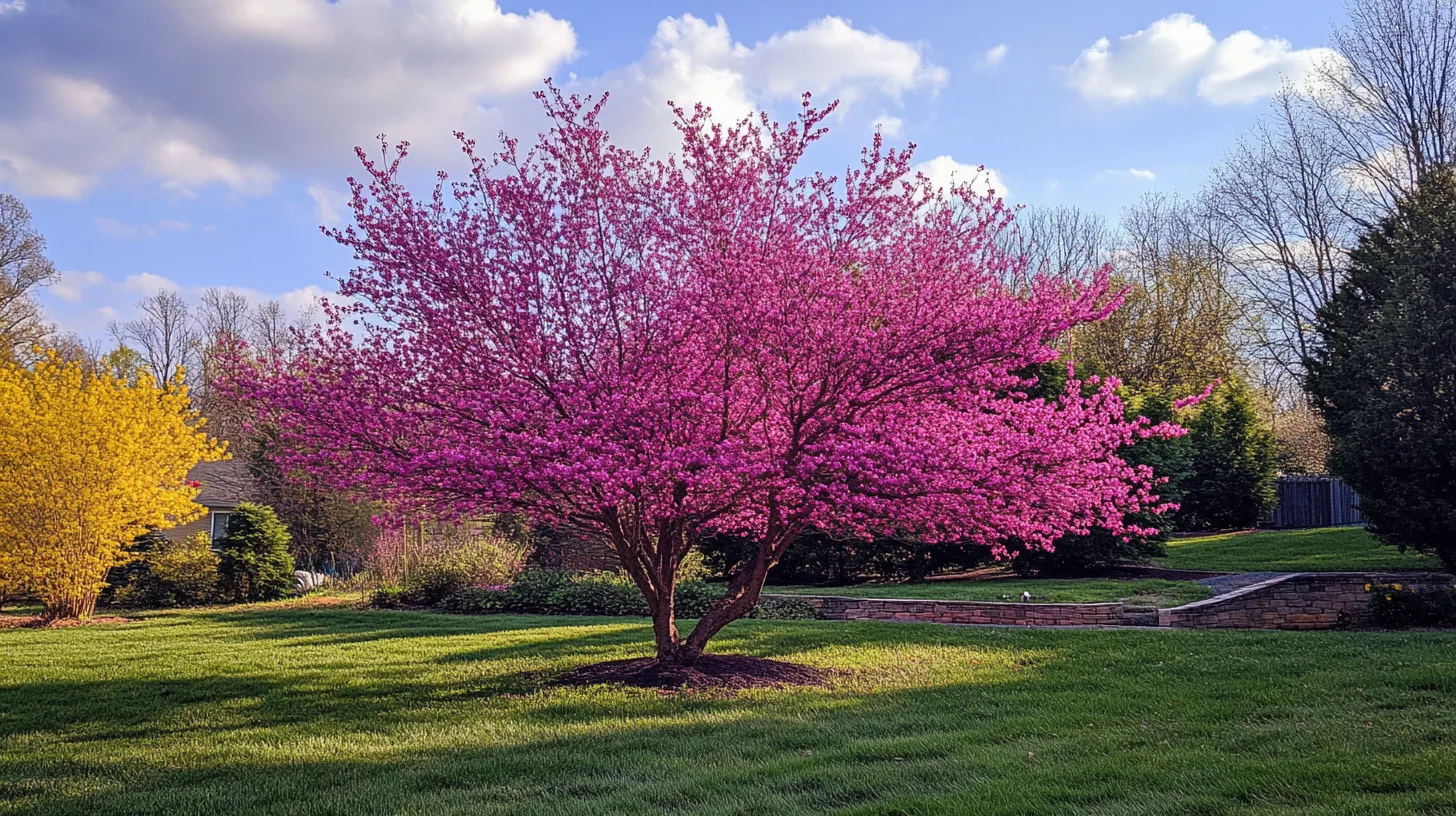Hey friend, looking to add incredible trees to your Colorado yard? You’ve come to the right place.
I’ve lived here for years, and choosing trees that can handle our sun‑baked days, chilly nights, and altitude isn’t always easy.
In this guide, I’m sharing my top picks, from hardy conifers to showy deciduous trees.
You’ll get tips, pitfalls to avoid, and answers to all your Colorado tree questions.
Let’s dive in!
Why Tree Selection in Colorado Really Matters
Colorado’s climate is no joke. Between hot summers, unpredictable spring freezes, dry air, and high elevation, trees face a real test out here.
I’ve learned the hard way, not all pretty trees survive. We need species that don’t just look good but can actually thrive in our unique environment.
That’s why choosing smart, native or adaptable trees will save you money, time, and heartache. Plus, your yard will look amazing all year long.
12 Best Trees for Colorado
1. Colorado Blue Spruce (Picea pungens)
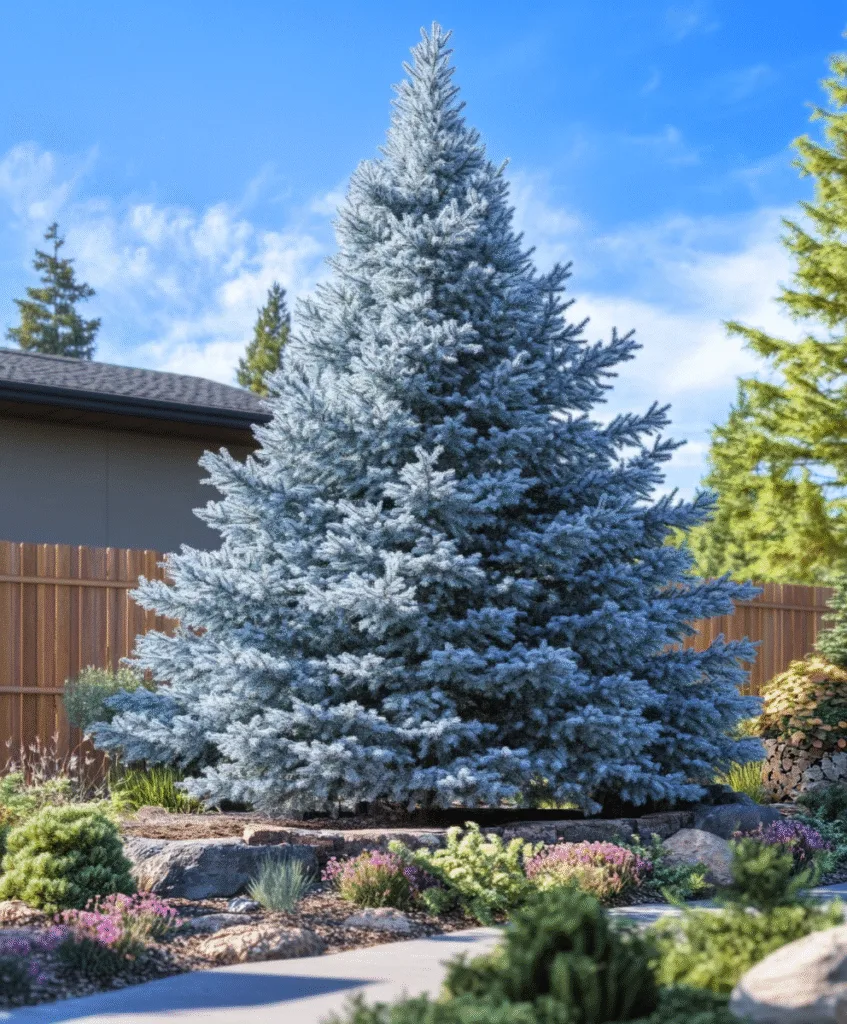
I absolutely love this tree. We planted one out front, and it’s basically our year-round MVP with that silvery-blue color.
It’s super cold-hardy and handles wind like a champ. Once it’s settled, it doesn’t even mind dry spells, which is gold around here.
If you want a low-maintenance, majestic evergreen that makes your yard pop, this one’s hard to beat.
- Drought-tolerant once established
- Evergreen, year-round color
- Wildlife-friendly (great for birds)
- Needs full sun and well-drained soil
2. Quaking Aspen (Populus tremuloides)
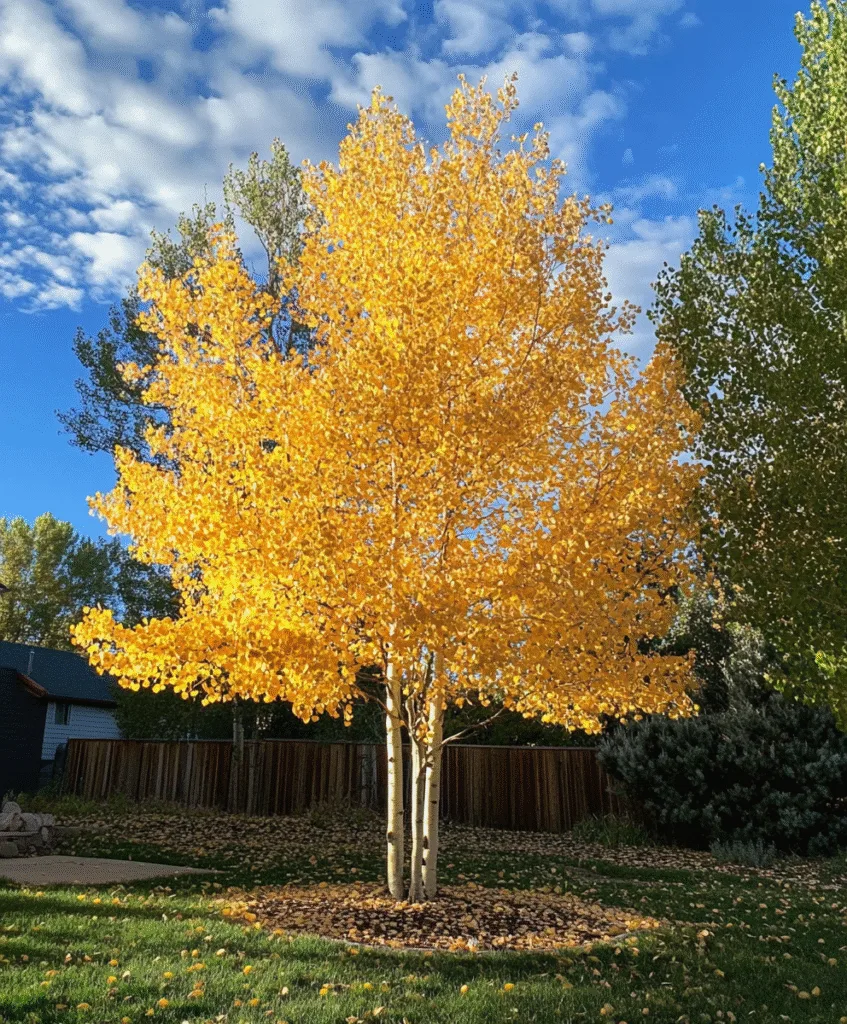
There’s something magical about hearing their leaves tremble in the wind, hence the name. They’re also a stunning sight in fall.
Aspens grow fast and don’t need a ton of fuss, but they do like cooler, moister pockets of your yard if you’ve got one.
Fair warning though, they love to spread. If you’re okay with a little grove action, they’ll reward you big time.
- Vibrant golden fall foliage
- Spreads via roots, forms groves
- Quick-growing, short lifespan (~50 yrs)
- Best in moist, well-drained soil
3. Brackens’ Western Yellow Pine (Ponderosa Pine)
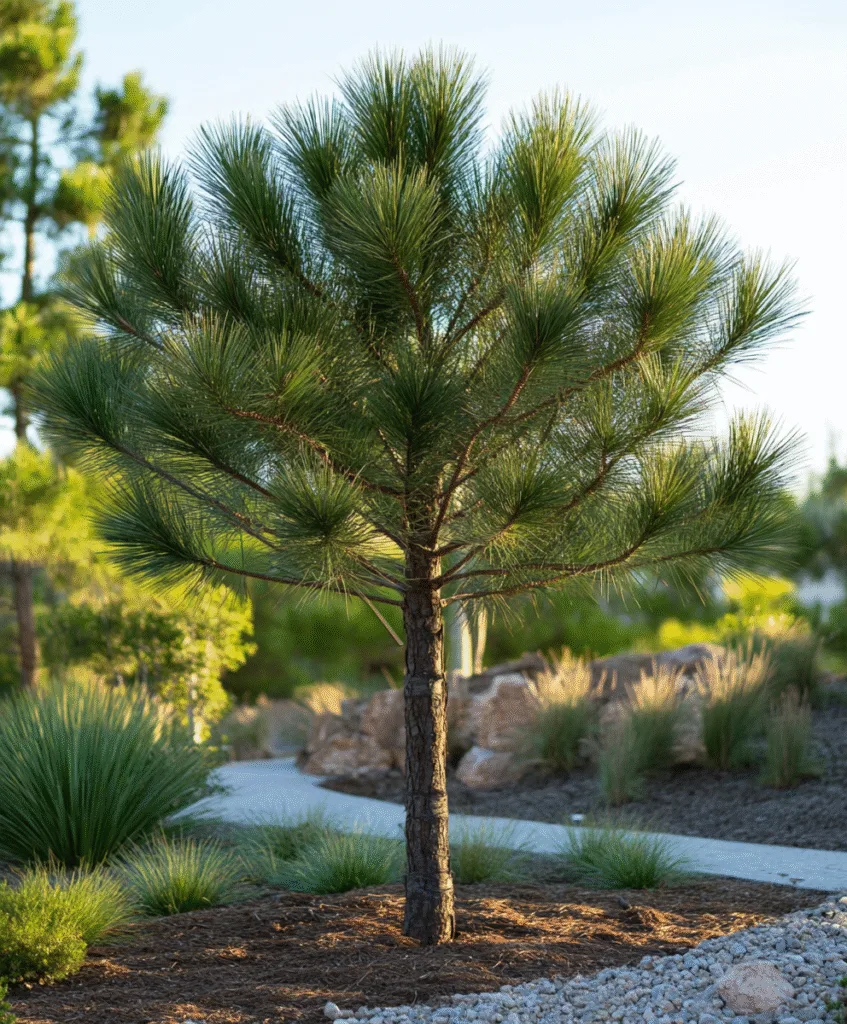
I’m a sucker for the vanilla scent of ponderosa bark, especially in the sun. It’s a big, beautiful beast of a tree.
It’s super resilient, heat, wind, cold, drought—you name it, this pine can handle it. Perfect for Colorado’s wild weather swings.
If you want something majestic and hardy that fits the native landscape, this is a top pick.
- Low water needs, loves full sun
- Long-lived and wind-resistant
- Fire-resistant bark and strong roots
- Grows best in deep, sandy soil
4. Honeylocust (Gleditsia triacanthos inermis)
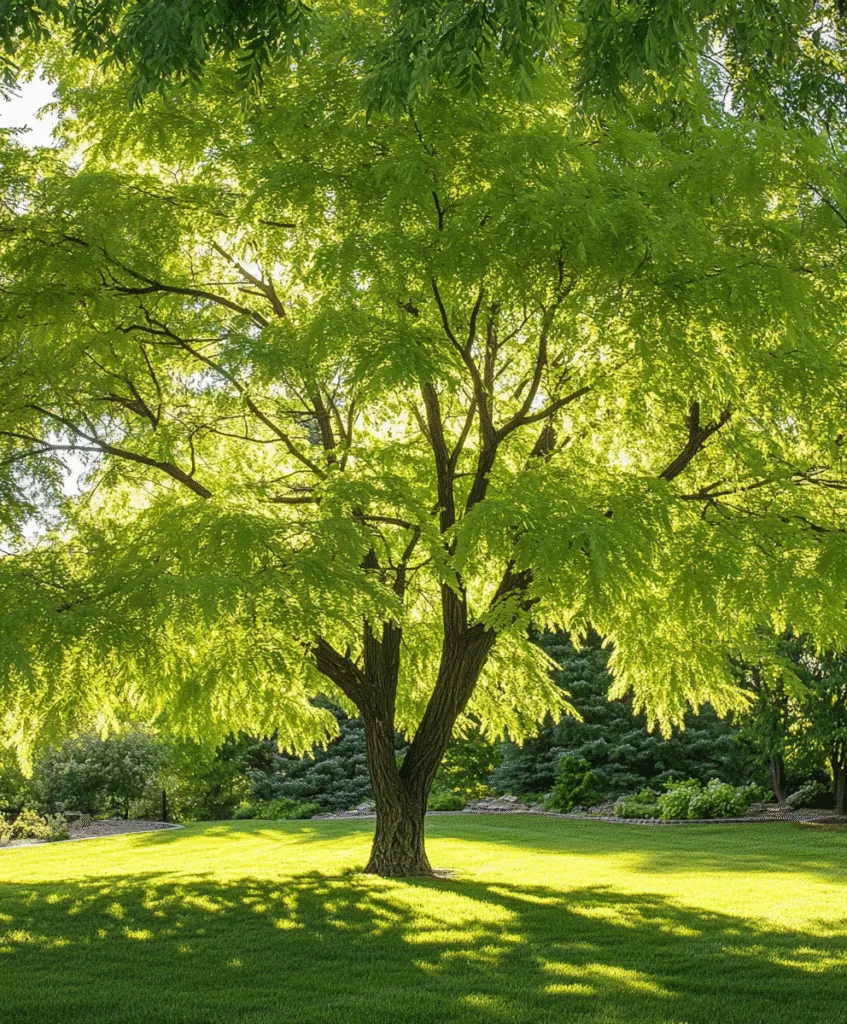
This one’s perfect for people who want light shade without a messy yard. The leaves are small and delicate, so less raking.
It tolerates everything, urban pollution, drought, poor soil, it’s basically the tough guy of landscape trees.
Plus, there’s a thornless version, which I highly recommend if you’ve got kids or pets.
- Filtered shade, ~60 ft tall
- Urban-tough and drought-hardy
- Choose thornless nursery cultivars
- Low maintenance and fast-growing
5. Serviceberry (Amelanchier alnifolia)
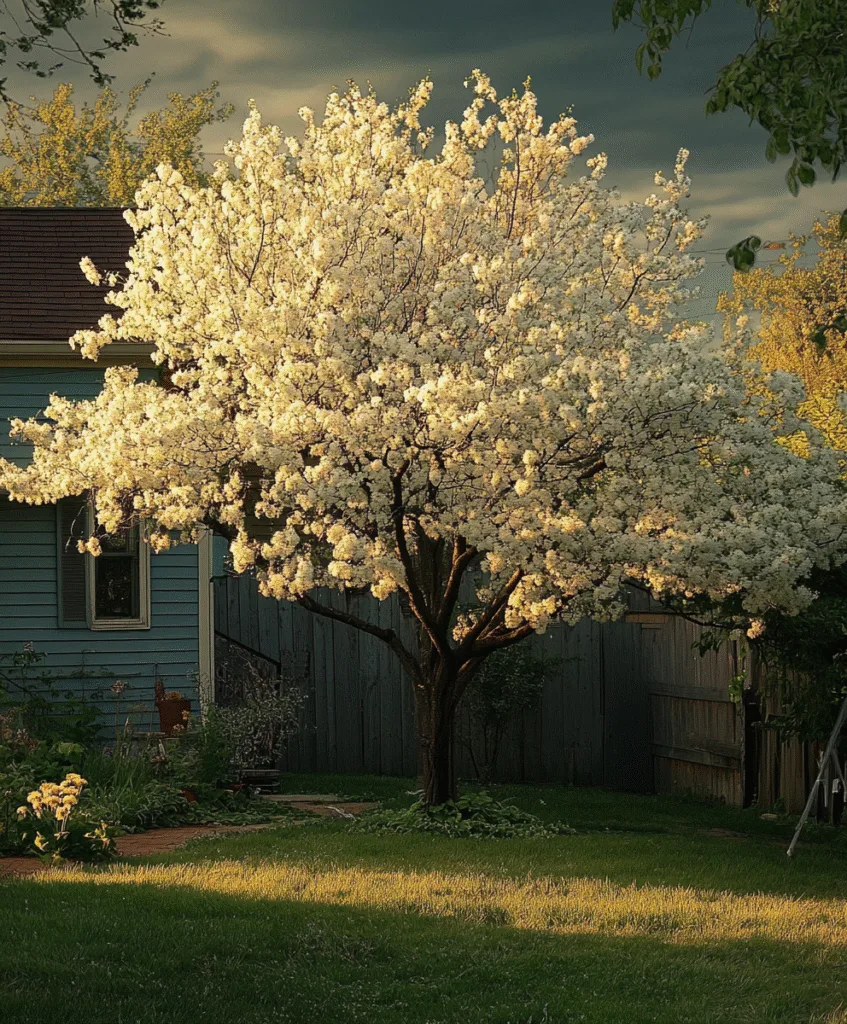
If you like trees that pull double (or triple) duty, this one’s for you. In spring, it flowers like crazy.
By summer, you get sweet berries (yes, you can eat them). And in fall, the foliage turns gorgeous red-orange.
It’s a smaller tree, so it fits nicely into tight spots or as part of a mixed border.
- Delicious berries for you or birds
- Spring white blooms look amazing
- Pretty fall color and compact size
- Grows ~15 ft, works in part shade
6. Gambel Oak (Quercus gambelii)
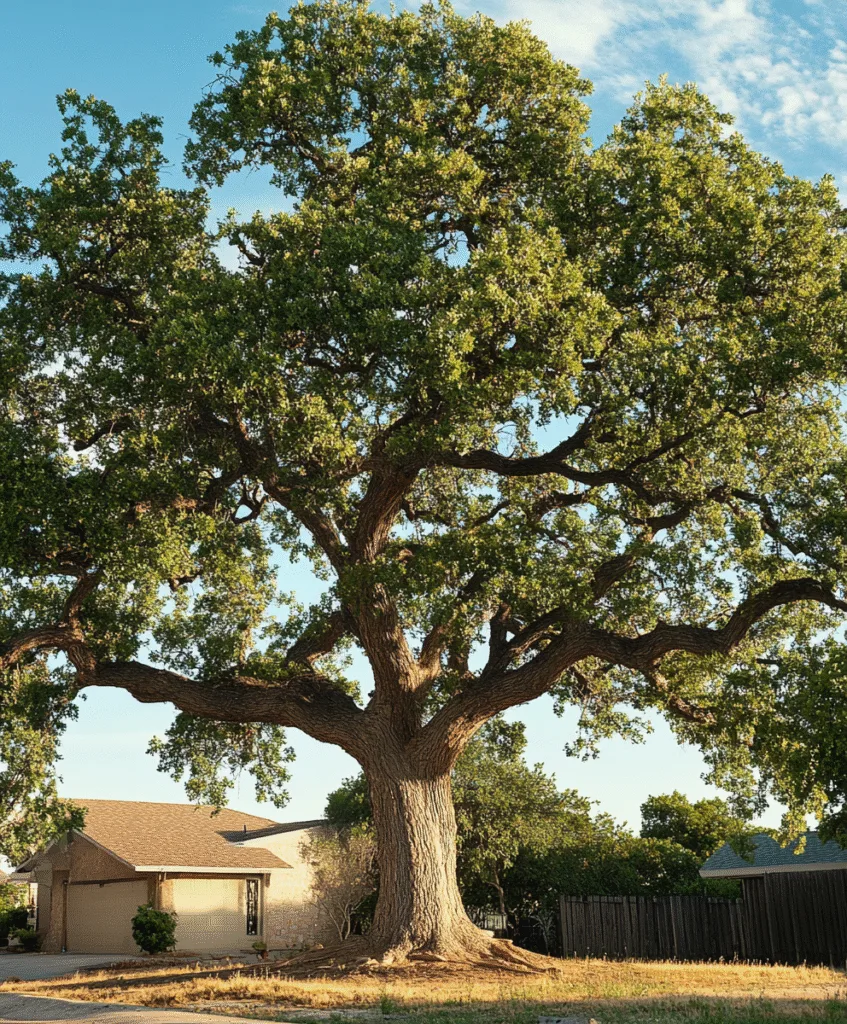
This oak is all about rugged charm. I love it because it gives a natural, woodsy look with little upkeep.
It’s ideal for hillsides or dry areas where other trees just give up. Plus, wildlife adore the acorns.
Gambel is a smaller, shrubbier oak, great for privacy screens or natural areas.
- Drought-tolerant Colorado native
- Provides acorns for wildlife
- Tolerates clay soil and wind
- Grows 15–30 ft tall
7. Amur Maple (Acer ginnala)
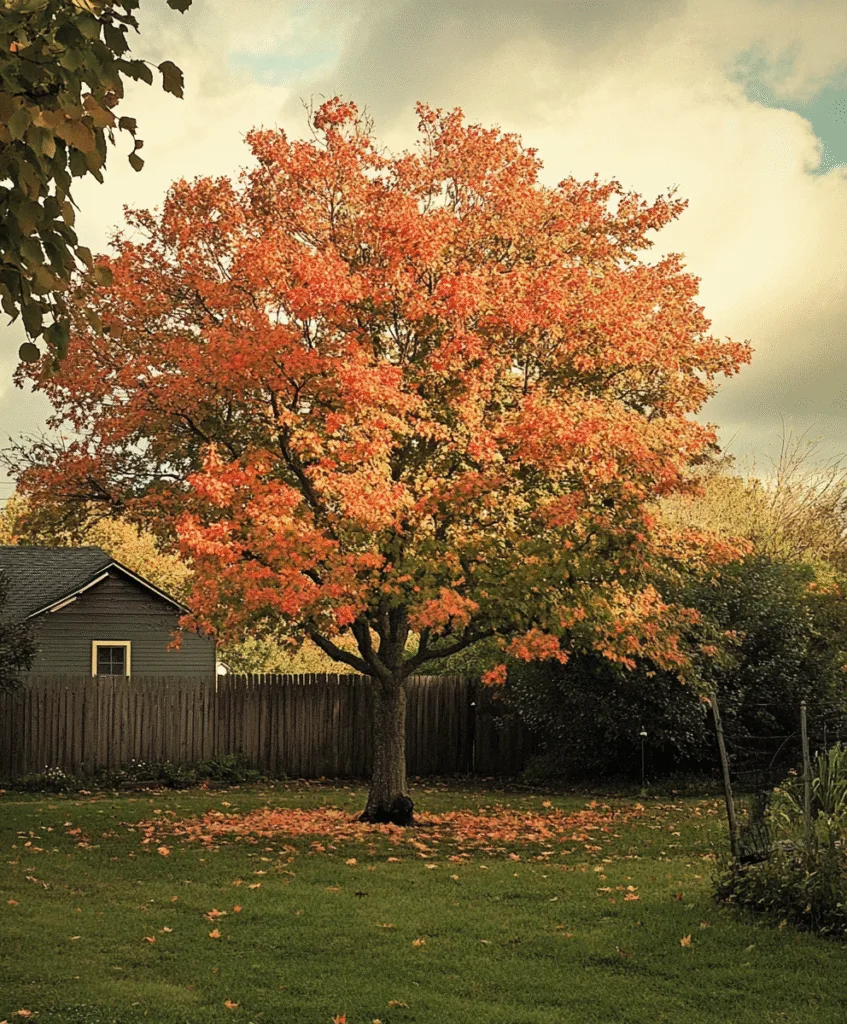
I always recommend this for smaller yards. It’s compact, pretty, and totally manageable.
In fall, it lights up like a fireball with rich oranges and reds. It’s honestly one of my favorite seasonal displays.
Best part? It’s easy to prune and doesn’t overwhelm your space.
- Grows only ~12 ft, perfect for tight spaces
- Brilliant fall color, easy to shape
- Works in full sun or part shade
- Needs good drainage
8. Munro Hawthorn (Crataegus x mordenensis ‘Toba’)
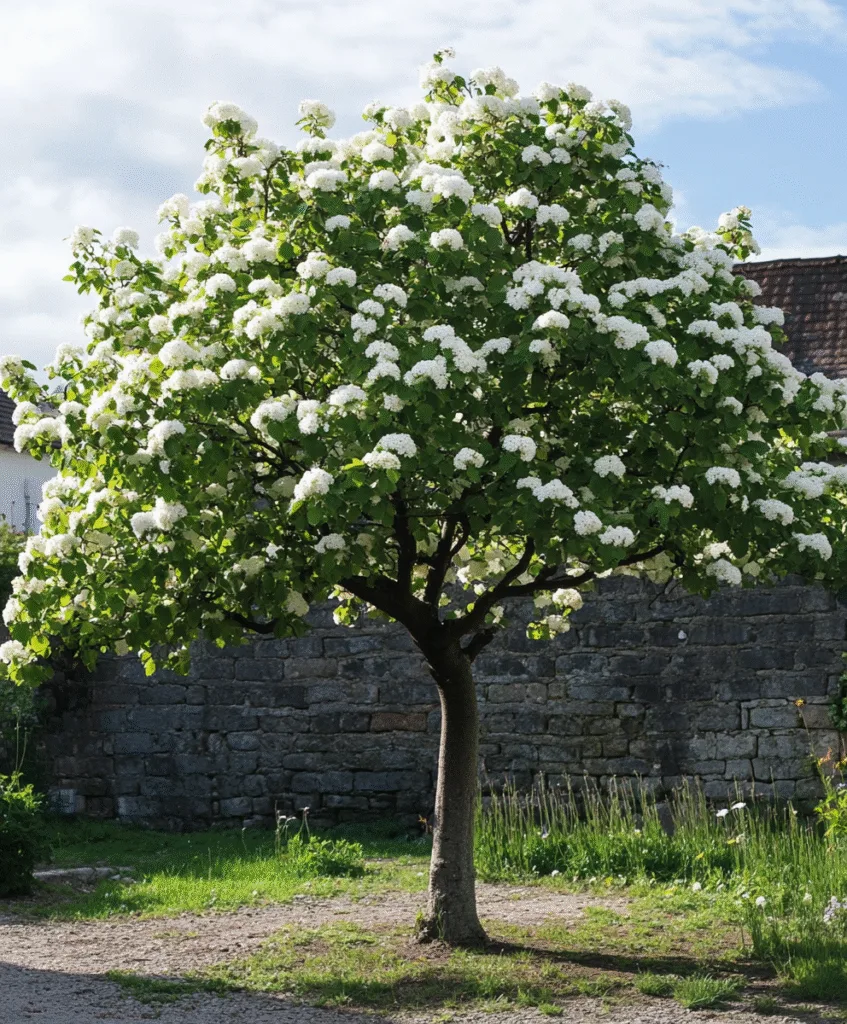
I call this my secret weapon tree because it’s not super common, but people always ask about it when they see it bloom.
It starts with white flowers that turn blush pink, then finishes the season with red berries that birds devour.
Tough as nails too, cold, sun, wind, it doesn’t care.
- Showy spring blossoms turn pink
- Berry clusters feed local birds
- Very hardy and wind-resistant
- Grows ~20 ft tall, full sun preferred
9. Scots Pine (Pinus sylvestris)
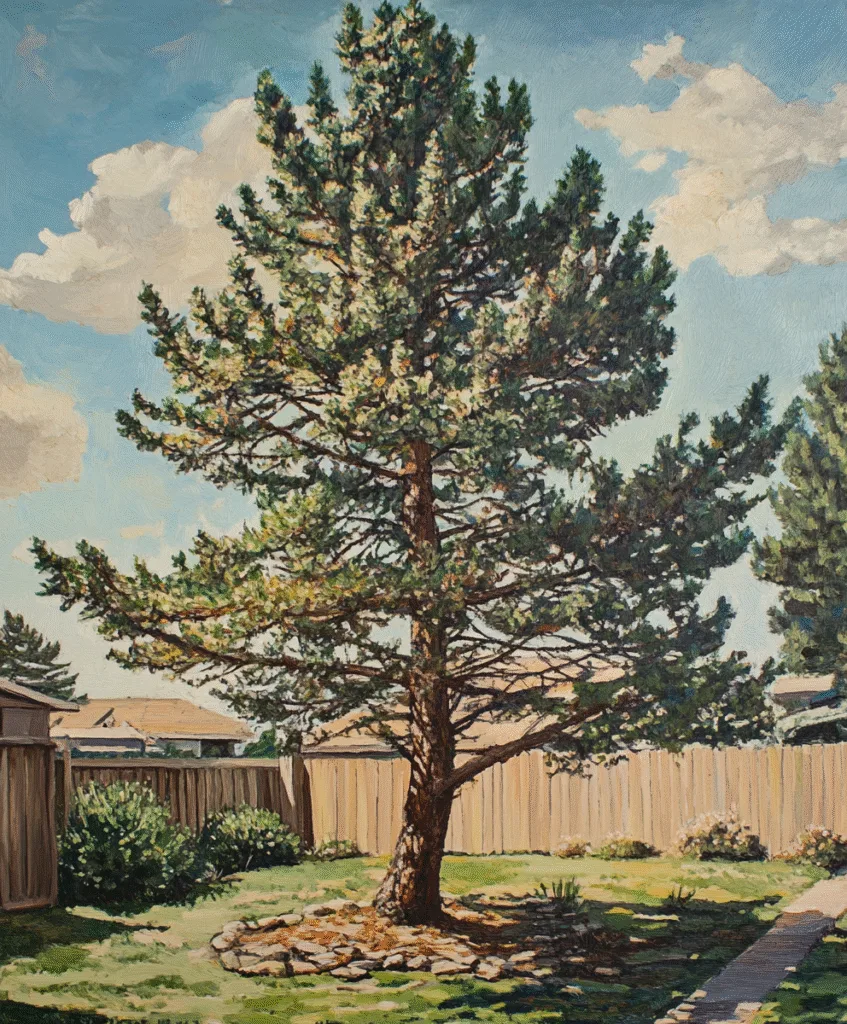
This one adds that rustic mountain vibe to your yard. And once mature, it has gorgeous orange-red bark that really pops.
It’s not too fussy, doesn’t mind poor soil or drought, and grows into an open, airy shape over time.
If you love the idea of a slow, steady, graceful evergreen, Scots pine won’t let you down.
- Strong, rugged look with orange bark
- Thrives in poor or sandy soils
- Evergreen, long-lived species
- Can reach 35–60 ft tall
10. Lodgepole Pine (Pinus contorta)
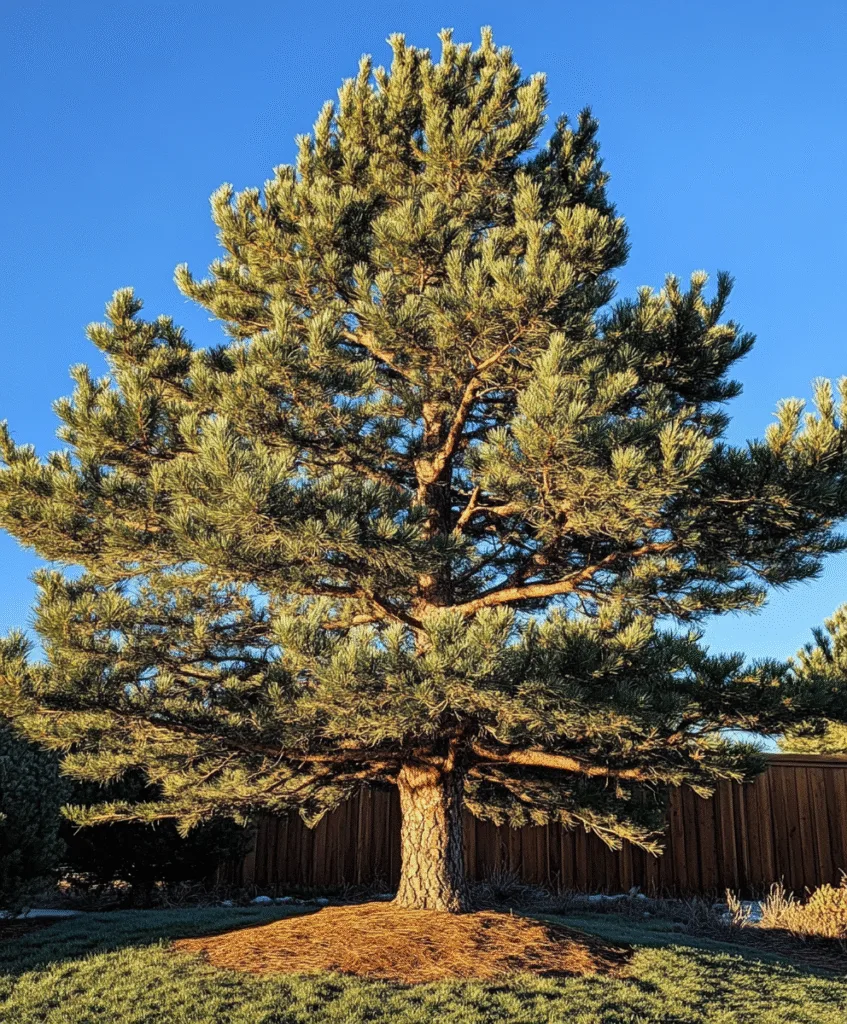
This one gives off serious Rocky Mountain energy. I planted a few on my cabin property and they’re thriving.
It’s tall, narrow, and low-maintenance, which makes it great for screening or vertical interest.
Plus, it’s disease-resistant and surprisingly fast-growing in the right spot.
- Tall, straight form, ~80 ft max
- Cold-hardy and pest-resistant
- Excellent for natural settings
- Prefers full sun, well-drained soil
11. Siberian Elm (Ulmus pumila)
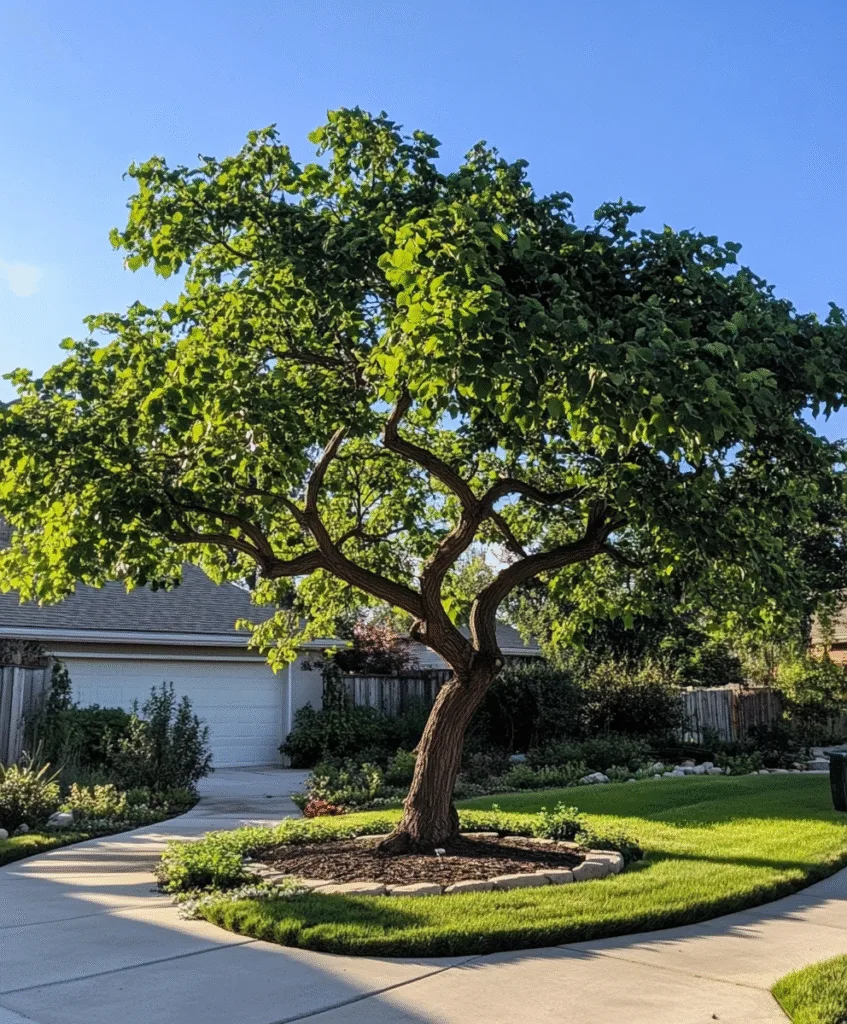
Let’s be real, this isn’t the prettiest tree, but if you need something FAST and durable, it delivers.
It can handle just about any condition Colorado throws at it, heat, drought, poor soil, you name it.
I’d say use it strategically as a temporary screen or windbreak.
- Super fast growth, up to 40 ft in 10 years
- Very drought-tolerant
- Needs regular pruning to stay in check
- Not the best for aesthetics, but functional
12. Eastern Redbud (Cercis canadensis)
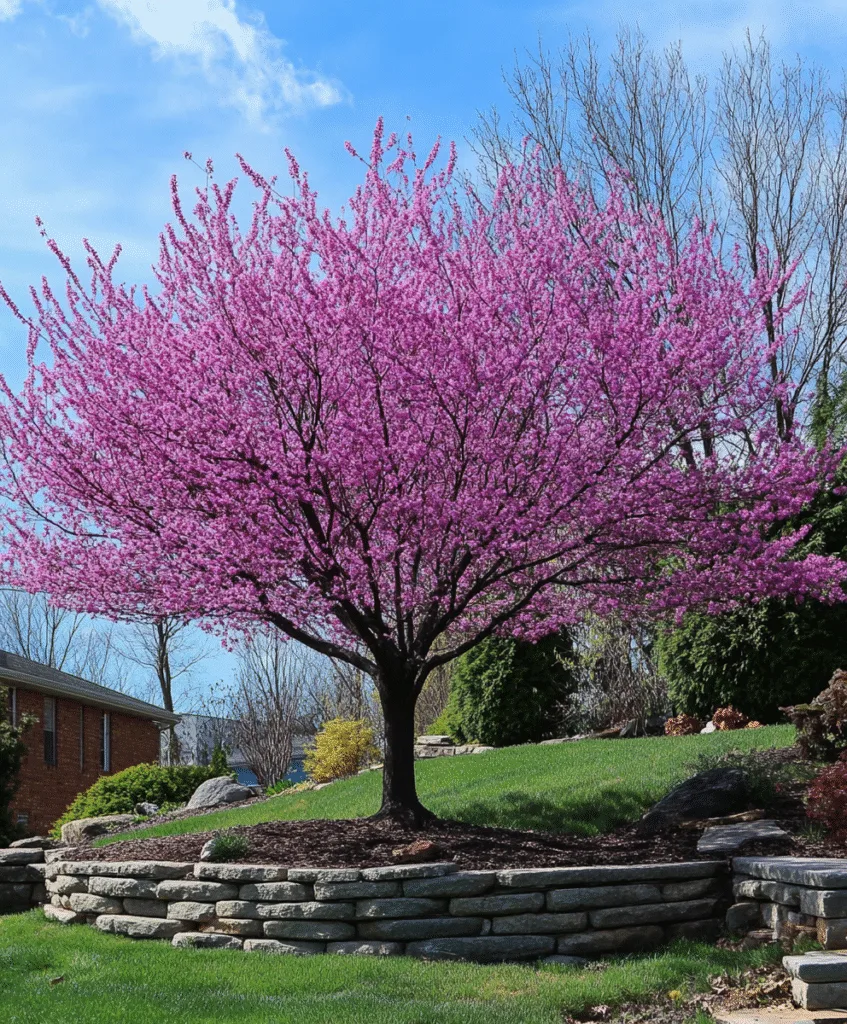
If you’re after a spring showstopper, this one’s it. My backyard lights up when those pink buds burst straight off the branches.
It’s smaller and does well in protected spots. Just give it a little love in terms of soil and water.
And even after flowering, it stays lovely through summer and fall.
- Bright pink blooms in early spring
- Lovely shape and heart-shaped leaves
- Grows 20–30 ft, prefers partial shade
- Needs rich, well-drained soil
FAQs
What trees are most drought-tolerant in Colorado?
Ponderosa pine, honeylocust, Scots pine, and Gambel oak are solid choices. Once established, they thrive with little watering.
Can I plant aspens in the city?
Yes, but give them space to spread or control their suckers. They do better in cooler microclimates and need regular water when young.
What’s the best low-maintenance flowering tree?
Serviceberry is my top pick. Gorgeous blooms, berries, fall color, and minimal fuss. Munro hawthorn is also a close second.
Are redbuds hard to grow in Colorado?
They’re a bit picky but worth the effort. Make sure they’re protected from wind and get some afternoon shade. They’ll reward you every spring.
To boil it down
Picking the right tree for your Colorado yard isn’t just about looks, it’s about longevity, hardiness, and making smart choices for our quirky climate.
These 12 trees all bring something special to the table, whether it’s evergreen charm, vibrant fall color, or eye-popping flowers.
Stick with proven winners, give them a good start, and you’ll be enjoying shade, beauty, and bird visits for decades to come.

